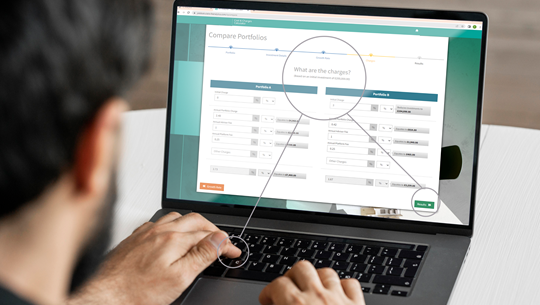Financial regulators have become slightly obsessed with transparency as a tool for both increasing competition and protecting consumers. Early attempts were pretty clunky, with Simplified Prospectuses that failed to live up to their name, later replaced by Key Investor Information Documents (KIIDs) for UCITS funds, while life and pension funds have had Key Features Documents.
Then, at the beginning of this year, we were hit by the double whammy of PRIIPs Key Information Documents (KIDs) and more detailed and more frequent client reports under MiFID II. PRIIPs KIDs, like UCITS KIIDs, require investment product providers to disclose the risks, costs, possible returns and other information on their products in a standardised and highly prescribed format
MiFID II client disclosure, requires advisers, investment platforms and DFMs to tell investors in advance how much they can expect to pay for an investment fund or service through them and then confirm the actual costs every year thereafter. Unlike PRIIPs KIDs, which show only the costs of the fund/product, disclosure through MiFID II aggregates product costs, adviser costs and any platform charges.
Exactly what is disclosed under MiFID II manages somehow to be both strictly prescribed and open to interpretation at the same time.
In various places, the rules – from the level 1 directive through level 2 delegated regulations to the level 3 guidance Q&As – have explained what advisers need to disclose, the detail they need to provide and when and how often they need to communicate. But they don’t really deal with the logistics of gathering the data from all the sources at every stage in the process or where these fit into the advice process.
For example, the ex ante MiFID II cost projection needs to include any “anticipated spikes and fluctuations”. These are not defined, but can be assumed to include any one-off (initial) charges and performance fees. But it’s a brave person who will predict when performance fees might be due. And what about estimating any possible costs of switching funds?
The ex ante cost projection could be achieved with just four numbers – summary product costs and summary service costs, each as a cash amount and a percentage – although if a client asks, they can have an itemised breakdown of those numbers. But the guidance said that the extent to which it needs to be itemised is only the same as on a PRIIPs KID in the case of the product, i.e. the four categories of one-off, ongoing, transaction and incidental costs; for services, it’s the same plus any ancillary costs.
As you need the itemised numbers to calculate the summary and an itemised report consists of no more than nine cash amounts and percentages, it raises the question of why bother with the summary option at all. Even if very few clients are likely to ask for a cost breakdown, you need to have them all to hand, just in case. So, it’s no surprise that a number of advisers, DFMs and platforms are issuing the itemised breakdown as standard in all cases.
Of course, it is important for the ex ante client report, and indeed all MiFID II reporting, to be clear and accurate. Bombarding clients with every number they could ever need may satisfy the need for transparency, but it does little to enlighten them. Similarly, keeping the disclosure to the right level of detail isn’t much use if the numbers aren’t correct.
Advisers are in desperate need of a service that they can rely on to supply them with accurate fund cost data and a reporting tool that can summarise that into something meaningful. Finally, they need to be able to add their own costs plus those of any platform into the report and produce a compliant and clear report.
FE Analytics, our funds research for advisers, already provides a new Reduction in Yield calculator to show the reduction in yield (RIY) in a PRIIPS-compliant way and you can access the four different product costs that need to be disclosed in a
MiFID II ex ante client report via FE Analytics. Our team is now busy developing an additional calculator that will enable you to get a clear and transparent view of all MiFID charges that impact a clients’ investments. It will include pre-populated ex ante product charges and allow user defined investment term and growth rates.
Contact us for more information.


